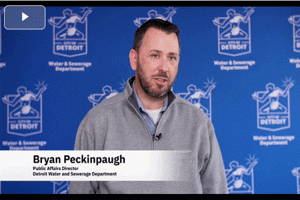LEAD AND COPPER RULE (LCR) RESOURCES
-
New Orleans Develops The New Orleans Water Service Line Map With Technical Support From BlueConduit5/22/2023
New Orleans, like many cities dealing with lead service lines (LSLs) in the United States, lacks a comprehensive map that identifies the location of its LSLs.
-
Unbiasing Your Service Line Material Prediction Model5/21/2023
Learn how you can be aware of potential bias in your predictive model model and make decisions about using the model’s results with this in mind.
-
The Dangers Of Lead Poisoning In Schools — And How We Can Fix The Nationwide Problem5/10/2023Known as a highly toxic chemical that is damaging to growth and learning development, lead in tap water is a matter raising nationwide concern. While some states have acted to improve this issue, the health threat of lead in school drinking fountains is now leading citizens to worry about the dangers of child consumption, the country's aging water systems, and the protection of our future generation.
-
Regulations Reducing Lead And Copper Contamination In Drinking Water Generate $9B Of Health Benefits Per Year, According To New Analysis5/10/2023
The Environmental Protection Agency (EPA)’s Lead and Copper Drinking Water Rule Revision (LCRR) costs $335M to implement while generating $9B in health benefits annually—far exceeding the EPA’s public statements that the LCRR generates $645M in annual health benefits, according to a new study from researchers at Harvard T.H. Chan School of Public Health.
-
Metal-Filtering Sponge Removes Lead From Water5/10/2023
Northwestern University engineers have developed a new sponge that can remove metals — including toxic heavy metals like lead and critical metals like cobalt — from contaminated water, leaving safe, drinkable water behind.
-
How To Evaluate Predictive Models For Lead Service Line Inventory And Replacement5/4/2023Get an accurate service line material prediction for Lead and Copper Rule (LCR) compliance by avoiding modeling pitfalls.
-
120Water Announces Four-Part Webinar Series Launching May 25/2/2023
120Water, the leading solutions provider for lead reduction and drinking water programs, continues its commitment to providing innovative tools to water professionals with its latest offering, an informative four-part webinar series.
-
Infrastructure Upgrade: Expediting Lead Pipe Removal Protects Communities4/18/2023
Assuring everyone has access to clean drinking water is essential. However, despite significant improvements in technology and public health across history, lead water pipes still pose a substantial threat to that goal. The extent of this issue has become more evident, and the push for lead pipe removal is accelerating.
-
Why We Use AWS For Our Machine Learning Platform At BlueConduit4/14/2023
Properly deployed, predictive machine learning can bridge gaps, accelerating the work of modernizing our water systems in an explainable manner that makes the best use of our scarce resources.
-
How To Identify And Address Bias In Your LSL Inventories4/14/2023
Understand why it's so important that water systems can recognize and address sources of bias in their lead service line inventory process.
LCR SOLUTIONS
-
Lead Service Line (LSL) Software Platform6/5/2023
BlueConduit’s lead service line (LSL) machine learning predictive modeling platform reduces cost, increases efficiency, increases equity and supports healthy, thriving communities.
-
leadCAST Predict3/23/2023
leadCAST predict is an additional feature of the leadCAST LCRR compliance management solution that muses a machine learning model coupled with your inventory data to generate predictions of service line material.
-
Understanding The White House's Get The Lead Out Partnership, With One Of Its Participants2/13/2023
In late January, the White House welcomed over 100 organizations for the launch of the Biden-Harris Get the Lead Out Partnership, which seeks replacement of 100% of the nation’s lead service lines (LSLs) in 10 years. The organizations that were on hand come from various sectors, but all have a vested interest in ‘getting the lead out’ and improving water quality for consumers, and all have partnered with the Administration to achieve the lofty goal of complete LSL removal.
-
Develop An Accurate Lead Service Line Inventory & Replacement Plan With BlueConduit11/2/2022
BlueConduit helps to determine the scale of lead service lines that remain in a distribution system in order to accurately plan capital outlay, secure funds, and pace the replacement work.
-
SWORDFISH: Buried Lead Pipe Detection8/12/2022
SWORDFISH is the world’s first hand-held buried lead pipe detection tool using an 18V battery with automatic system for cable feed in pipe diamters from ½ to 3 inches (12mm - 76mm).
ABOUT LEAD AND COPPER
The U.S. EPA’s Lead and Copper Rule (LCR), a mandate for drinking water utilities and pipeline products manufacturers to reduce the public’s exposure to lead, received increased scrutiny following the 2014 lead crisis in Flint, MI, leading to new Lead and Copper Rule Revisions (LCRR) which take effect in 2020. Although the LCR has been updated numerous times, the most recent requirements demand a level of action unprecedented since the LCR's initial implementation in 1991. Under the LCRR, utilities must have programs in place for tap-sampling, corrosion control treatment (CCT), lead service line replacement (LSLR), consumer communication, and public education. LCRR will affect almost all aspects of utility operations (treatment, distribution, labor, financial planning, consumer outreach, etc.) to varying and often complex degrees. This information hub will provide LCRR guidance, news, and analysis to facilitate compliance, answering questions such as: What is the maximum contaminant level (MCL) for lead and copper? Who is responsible for the lead service line (LSL)? Which chemicals provide corrosion control? When do Lead and Copper Rule Revisions take effect?
If you have a question not answered here, send an email to editor@wateronline.com.

